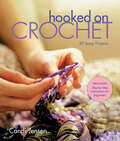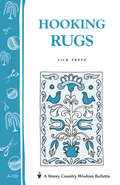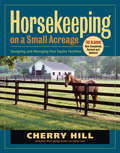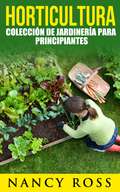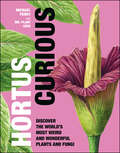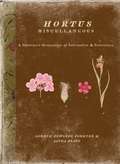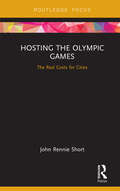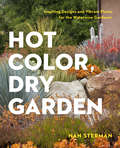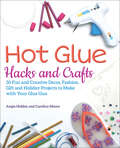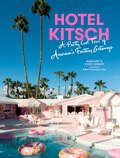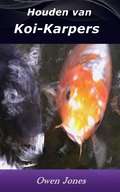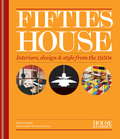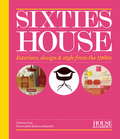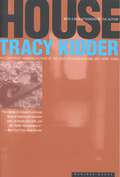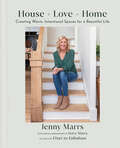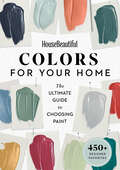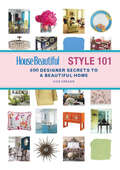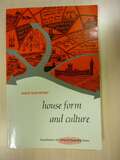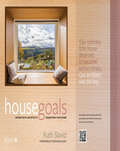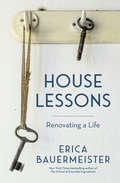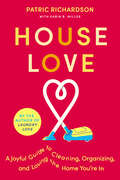- Table View
- List View
Hondentraining: puppytraining
by Bronson HolderBoekbeschrijving De manier waarop ze ons laten voelen dat ze van ons houden en ons hebben gemist als ze naar ons toe rennen, bijna in onze armen springen als we thuiskomen en de manier waarop ze ons helpen ontstressen door ons alleen maar hun vacht te laten aaien is meer dan genoeg om ze onmisbaar te maken in onze levens. Omdat ze de vreugde in ons leven helpen vergroten en onze stress en zorgen verminderen, verdienen ze de beste beloning die we ons kunnen veroorloven. Een van de beste manieren om ze te belonen is door ze zelfgemaakte hondensnoepjes te geven. Puppytraining is een van de dingen die je het eerst moet doen. Je kunt overal instructies vinden, maar mijn methodes heb ik gebruikt bij honden van allerlei rassen, en ze hebben altijd goed gewerkt. Een paar belangrijke dingen moet je onthouden: houd je puppy altijd in de gaten, laat altijd zien dat je het erg fijn vindt als hij iets goed doet, en geef je puppy nooit de schuld als het fout gaat – blijf gewoon doorgaan met oefenen tot hij het snapt en het goed gaat. En KOOP dit boekje. Je hond is je trouwste vriend, maar deze viervoeter is tegelijkertijd jouw verantwoordelijkheid. Je zal hem moeten trainen om zich te gedragen, zodat je voorkomt dat hij een schande wordt voor je buren, vrienden en kennissen. Je wilt niet dat je anderen in het harnas jaagt door onhandelbaar gedrag van je hond in het openbaar. Als je klaar bent om actie te ondernemen en je leven ten goede te veranderen, zal dit boek je zeker de goede kant op sturen!
Hooked on Crochet: 20 Sassy Projects
by Candi JensenCraft stylish and unique fabric masterpieces. Whether you’re new to crocheting or just need a refresher course, Hooked on Crochet makes it a snap to learn basic techniques and then move on to more challenging patterns. Candi Jenson provides illustrated step-by-step instructions for 20 sweet and sassy projects that include hats, bags, clothing, and accessories for the home. You’ll learn how to use novelty yarns to make one-of-a-kind scarves, create cloche-style hats, and fashion lacey tank tops with this high-style guide to the world of crochet.
Hooking Rugs: Storey's Country Wisdom Bulletin A-120 (Storey Country Wisdom Bulletin Ser.)
by Lila FretzSince 1973, Storey's Country Wisdom Bulletins have offered practical, hands-on instructions designed to help readers master dozens of country living skills quickly and easily. There are now more than 170 titles in this series, and their remarkable popularity reflects the common desire of country and city dwellers alike to cultivate personal independence in everyday life.
Horsekeeping on a Small Acreage: Designing and Managing Your Equine Facilities
by Cherry HillKeeping your own horses requires dedication, hard work, and a sincere interest in the well-being of your animals. This practical guide shows you how to design efficient facilities and establish effective maintenance routines so that your horses can stay happy, healthy, and safe on even the smallest plots of land. Offering expert advice on barn designs, fencing options, and pasture management, Cherry Hill stresses the importance of understanding horse behavior and environmentally responsible land stewardship as integral aspects of a pleasurable and rewarding horsekeeping experience.
Horta para iniciantes - manual completo
by Rosana Vargas Nancy RossO capítulo 1 ensina como selecionar as ferramentas adequadas. Impossível iniciar o cultivo de horta sem ter o material apropriado em ordem. É necessário tê-las em mão antes de começar o cultivo e garantir as melhores chances de sucesso. Depois é importante definir local adequado para que o crescimento e o desenvolvimento da horta ocorra conforme desejado. O capítulo 2 traz aspectos importantes a serem considerados no momento de selecionar o local apropriado para a horta.
Horticultura: colección de jardinería para principiantes
by Carolina Beltramo Nancy Ross¡Descubre los conceptos básicos del cultivo de vegetales, marihuana, hierbas medicinales e hidroponía, todo en un solo libro!
Hortus Curious: Discover the World's Most Weird and Wonderful Plants and Fungi
by Michael PerryCelebrate the weird, wacky, and wonderful world of plants with a book that revels in the diversity of the botanical world.Plants are truly awe-inspiring. They can be vast, minute, smelly, or spectacularly ugly. Some plants live on their own, or by growing off others; some live by air and water; others are carnivorous, eating the creatures around them; some plants look remarkably like animals; while others have unusual symbolism; and some have special cultural significance. This book explores them all, bringing together the most peculiar and most fascinating plants on the planet – celebrating them in all their diverse splendor.Split into five chapters, covering everything from poisonous plants to painkilling ones, Michael Perry explains exactly what makes each plant special. With exquisitely detailed illustrations of all the different species, this is an informative, humorous, and beautiful gift for all those who love plants – whether they want to grow them or not. Hortus Curious delivers a different way to view the plant world and enjoy it for its bonkers and bizarre.The book is split into five chapters, covering:- Plants Behaving Badly – the criminal world of plants such as poisonous plants, insect catching plants, and plants that do risky thing- Mistaken Identity – plants that look like other things, e.g. flowers that look like monkeys, bees, or even dead man&’s fingers- Greater Good – did you know that aspirin comes from a plant? This chapter explores the plants that make up our everyday products- Superheroes – find out about the plants that can disguise themselves, changing color, shape or even moving themselves- X-rated Plants – a selection of the rudest plants out there!A humorous and quirky gift book for people interested in plants and gardening, Hortus Curious is sure to delight.
Hortus Miscellaneous: A Gardener's Hodgepodge of Information and Instruction
by Lorene Forkner Linda PlatoFrom the kinds of trees standing at Great Dixter to the 20 deadliest flowers to the best small garden animals according to the Indiana Department of Agriculture--gardening is a pursuit with no end of information to sift through. Where does botany start but with the naming and grouping of all flora? List making is in the gardener's blood, and this volume of random facts, data, and wisdom, will excite the Latin-spouting garden geek as much as the arrival of the new Heronswood catalog. Some of the entries will be wholly practical, like the 15 ornamental plants that deer will not eat, and others will be decidedly impractical, such as the flower that adorns the grave of famed English gardener Gertrude Jekyll (bergenia).
Hosting the Olympic Games: The Real Costs for Cities
by John Rennie ShortHosting the Olympic Games reveals the true costs involved for the cities that hold these large-scale sporting events. It uncovers the financing of the Games, reviewing existing studies to evaluate the costs and benefits, and draws on case study experiences of the Summer and Winter Games from the past forty years to assess the short- and long-term urban legacies for host cities. Written in an easily accessible style and format, it provides an in-depth critical analysis into the franchise model of the International Olympic Committee (IOC) and offers an alternative vision for future Games. This book is an important contribution to understanding the consequences for the host cities of Olympic Games.
Hot Color, Dry Garden: Inspiring Designs and Vibrant Plants for the Waterwise Gardener
by Nan Sterman“Eye-popping proof that water-wise gardens are bold, beautiful and brilliantly hued.” —San Diego Home and Garden Dry weather defines the southwest, and it's getting dryer. As water becomes more precious, our gardens suffer. If we want to keep gardening, we must revolutionize our plant choices and garden practices. Hot Color, Dry Garden provides a joyful, color-filled way to exuberantly garden in low-water conditions. Garden expert Nan Sterman highlights inspiring examples of brilliant gardens filled with water-smart plants. You'll find information about designing for color using plants, architecture, and accessories, along with a plant directory that features drought-tolerant plants that dazzle.
Hot Glue Hacks and Crafts: 50 Fun and Creative Decor, Fashion, Gift and Holiday Projects to Make with Your Glue Gun
by Angie Holden Carolina MooreFifty amazingly creative things you can do with your glue gun—includes projects kids can help with too!Filled with color photos and easy-to-follow step-by-step instructions—plus safety tips and helpful information on equipment and supplies—Hot Glue Hacks and Crafts shows how to create unique and fun projects from a wide variety of stylish glues. Discover:• Imaginative Ideas for Kids• Fun and Artistic Hacks• Seasonal Decorations• Holiday-Themed Crafts• Creative Decor• Cute Party Ideas
Hotel Kitsch: A Pretty Cool Tour of America's Fantasy Getaways
by Margaret Bienert Corey BienertA visual celebration of the best fantasy suites and honeymoon hotels across America and beyond, from the creators of A Pretty Cool Hotel Tour In 1963, the savvy owners of the Cove Haven Resort in the Poconos unveiled their heart-shaped tub. Like Elvis Presley and Playboy magazine, it launched a postwar phenomenon that defined a new era of pop pleasure: the honeymoon hotel. Destinations across the country were soon racing to catch up, installing not just heart-shaped tubs but all types of over-the-top design flourishes, from pink shag carpeting to immersive worlds worthy of a Broadway stage set, in order to create a sense of romance, fantasy, even adventure. From the photographers and inveterate travelers behind the social media sensation A Pretty Cool Hotel Tour, Hotel Kitsch celebrates dozens of creative, nostalgic, one-of-a-kind hotels that span the heart of the Poconos and across the United States to Mexico, Spain, and the UK. Discover, in the middle of Iowa, a jungle room with fake trees and foliage surrounding the bed as if it had taken its cue from Where the Wild Things Are. Or Jules&’ Undersea Lodge in Key Largo where the rooms are reached by scuba diving. An Arctic Cave room at a hotel in Kentucky with its carved blue walls and not a window to be found. And on the California coast, the iconic Madonna Inn featuring 110 rooms, each themed and no two alike. Along the way, authors Margaret and Corey Bienert uncover too many wild details to mention, including unconventional beds (a Cadillac, a clamshell, a sandwich), mirrors on mirrors on mirrors, in-room swimming pools, full suits of armor, and fiber-optic star ceilings. While it&’s not a travel guide, every destination in Hotel Kitsch is open for business. Time to check in.
Houden van Koi Karp (Hoe U... #1)
by Owen JonesHouden van Koi Karp De inhoud van dit e-boek over Koi-tuinvijvers en aanverwante onderwerpen is onderverdeeld in achttien hoofdstukken, die je zullen helpen om een site voor je Koi Carp Pond te kiezen, deze het hele jaar door in te stellen en te onderhouden en te zorgen voor je waardevolle vis tijdens de verschillende seizoenen en zelfs in bijzonder ongunstige weersomstandigheden. Het kan zelfs helpen om je in een nieuwe carrière te begeven. Het minste dat het zal doen is u honderden besparen op professioneel advies. Als een toegevoegde bonus, verleen ik u toestemming om de inhoud op uw eigen website of in uw eigen blogs en nieuwsbrief te gebruiken, hoewel het beter is om deze eerst in uw eigen woorden te herschrijven. U kunt het boek ook splitsen en de artikelen doorverkopen. In feite is het enige recht dat u niet hebt, het opnieuw verkopen of weggeven van het boek zoals het aan u is bezorgd. Als u feedback heeft, laat deze dan achter bij het bedrijf waar u dit boek van heeft gekocht of stuur het naar mij op owen@amiabledragon.com Je kunt meer boeken vinden zoals deze waar je deze hebt gekocht
House & Garden Fifties House (House & Garden)
by Catriona GrayThe post-war consumer boom of the 1950s, coupled with a desire for new, innovative design resulted in one of the most exciting decades in the history of interiors - a visual revolution that was captured on the pages of British House & Garden.In Fifties House, mid-century modern enthusiast Catriona Gray has drawn on the magazine's peerless archive, curating the best illustrations and photographs to show how the use of colour, pattern, homewares and furniture evolved through the decade. The homes of key tastemakers are featured including Le Corbusier, Giò Ponti, Terence Conran and Hans and Florence Knoll. The first title in the new Decades of Design series, House & Garden Fifties House is required reading for mid-century modern enthusiasts, collectors and decorators in search of inspiration from the most influential homes of the past.
House & Garden Sixties House: Interiors, design & style from the 1960s (House & Garden)
by Catriona Gray House & GardenFrom Pop art to Op art, plastic furniture to bubble-gum paint colours, the Sixties saw a new wave of interior design that was closely linked to popular culture and fashion, becoming increasingly youth-oriented and playful to appeal to the new generation of baby-boomers. In Sixties House, mid-century modern enthusiast Catriona Gray has drawn on the magazine's peerless archive, curating the best illustrations and photographs to show how the use of colour, pattern, homewares and furniture evolved through the decade. The homes of key tastemakers are featured including Bridget Riley, Mary Quant, David Mlinaric, Barbara Hulanicki of Biba and David Bailey. The second title in the new Decades of Design series, House & Garden Sixties House is required reading for mid-century modern enthusiasts, collectors and decorators in search of inspiration from the most influential homes of the past.
House (Random House Reader's Circle Ser.)
by Tracy KidderIn the New York Times bestseller House, Pulitzer Prize–winning author Tracy Kidder takes readers to the heart of the American Dream: the building of a family's first house with all its day-to-day frustrations, crises, tensions, challenges, and triumphs.In Kidder's "remarkable piece of craftsmanship in itself" (Chicago Tribune), constructing a staircase or applying a coat of paint becomes a riveting tale of conflicting wills, the strength and strain of relationships, and pride in skills. With drama, sensitivity, and insight, he takes us from blueprints to moving day, shedding light on objects usually taken for granted and creating a vivid cast of memorable characters in the process."The making of a house is a strange blend of dreams and mundane work, of heaven and earth, and Mr. Kidder has explained it."??—??New York Times Book Review
House + Love = Home: Creating Warm, Intentional Spaces for a Beautiful Life
by Jenny MarrsA welcoming guide to transforming any home into a beautiful, inviting space—from the hosts of the hit HGTV show Fixer to FabulousBeloved by millions of fans, Jenny and Dave Marrs from HGTV&’s Fixer to Fabulous have built and remodeled hundreds of homes over the last two decades, creating joyful, warm, and thoughtful makeovers in each one. At its heart, the Marrs believe a home needs to express the intentions of its inhabitants. They also believe your home should be beautiful—not based on how the latest trends define beauty, but as a reflection of who you are. House + Love = Home is filled with:• Stunning Photos Throughout: Filled with never-before-seen gorgeous photographs of interiors, exteriors, family shots and more• Intentions: House + Love = Home highlights the twelve areas within a home that Jenny and Dave often remodel and show how each unique space can have intentional design elements that express the personalities of those who live there• Transformational Tips: these tips take a specific part of a home—everything from doors and shutters to lighting and flooring—and shows the most effective ways to enhance that areaAlongside gorgeous photos of the Marrs&’ restored farmhouse, their delightful kids, and many other spaces they&’ve reimagined, Jenny and Dave share their personal journey of establishing their own home, an ever-growing family and a busy, sustainable business. Woven throughout are wonderful essays by Jenny about their lives on the Marrs farm and how they seek to live intentionally with a deep abiding faith and purpose. As Jenny says, &“Our company motto is the simplest of equations: House + Love = Home. Beautiful spaces are most often imperfect and full of character. Just like people. Perfection is never the goal. Living well is.&”
House Beautiful Colors for Your Home: The Ultimate Guide to Choosing Paint
by House BeautifulBased on House Beautiful&’s popular color column, this pocket-sized handbook shows how a simple coat of paint can set the mood and add a designer's touch in any room. This gorgeous primer showcases more than 450 colors selected by top interior designers who explain how and why they chose these particular paints—along with swatches complete with manufacturer, name, and number, to help you pick the perfect pigment. Exploring everything from bold saturated hues to more soothing shades and essential neutrals, the designers offer special insight into what makes color work and how it influences the different spaces. The insider advice, plus stunning images of inspiring rooms, will help you select the ideal colors you&’ll enjoy for years.
House Beautiful Style 101: 400 Designer Secrets to a Beautiful Home
by Lisa CreganWant to change your home? Baffled by all the available design choices? House Beautiful helps you define your style--and get the look you love in every room.With advice and insider tips from dozens of designers, this entry in the magazines popular pocket guide series (which includes Colors for Your Home and Fabrics for Your Home) simplifies all your decorating decisions. A fun visual quiz helps you get started. Then an overview of hallmark elements and designers for five distinct decorating styles leads into room-by-room insider advice on selecting everything from furnishings and colors to carpets, window treatments, and lighting. Its a fresh approach to decorating!
House Form And Culture (Geography Ser.)
by Amos RapoportAn historical approach to the broad variety of primitive and peasant dwellings and the forces that affect them
House Goals: Design with architects, transform your home
by Ruth SlavidWhat would you do if you could reinvent your home? A link to the garden, to bring nature closer. A re-thought layout, that complements your lifestyle. A greener home, for a sustainable future (and lower energy bills). More space. Better space. You probably know what is wrong with your house, but do you really know what would improve it? Architects do. Even better, they can design a home that works for you, with ideas and solutions that you may not yet have considered. This stunningly illustrated book showcases the best examples of what can be achieved when homeowners collaborate with RIBA-certified architects to realise their House Goals. Sorted by motivation, it breaks down how architects can address these universal problems in unique, bespoke ways that suit their clients, while providing inspiration for your own home. Crucially, House Goals fully explains the process of working with architects – from first contact to completion – to ensure you know exactly what you’re getting into, and how to make the most of it. Features: Examples of projects in Georgian, Victorian, Edwardian, inter-war and post-war homes. A range of scales, from one-bed flats and split-level maisonettes to two-up, two-down terraces and cosy cottages, elegant town houses and detached homes as well as interesting conversions and garden rooms. Rural and urban locations ranging from hamlets to big cities, covering: London, Norfolk, Cheshire, Sussex, Herefordshire, Yorkshire, Oxfordshire and more. Work from more than 30 architects, including: Arboreal Architecture, Bradley Van der Straeten Architects, Gagarin Studio, IF_DO, Knox Bhavan and nimtim architects. With a foreword by Kevin McCloud.
House Gods: Sustainable Buildings and Renegade Builders
by Jim KristoficOur buildings are making us sick. Our homes, offices, factories, and dormitories are, in some sense, fresh parasites on the sacred Earth, Nahasdzáán. In search of a better way, author Jim Kristofic journeys across the Southwest to apprentice with architects and builders who know how to make buildings that will take care of us. This is where he meets the House Gods who are building to the sun so that we can live on Earth. Forever.In House Gods, Kristofic pursues the techniques of sustainable building and the philosophies of its practitioners. What emerges is a strange and haunting quest through adobe mud and mayhem, encounters with shamans and stray dogs, solar panels, tragedy, and true believers. It is a story about doing something meaningful, and about the kinds of things that grow out of deep pain. One of these things is compassion—from which may come solace. We build our buildings, we make our lives—we are the House Gods.
House Lessons: Renovating a Life
by Erica BauermeisterFROM NEW YORK TIMES BESTSELLING AUTHOR ERICA BAUERMEISTER COMES A MEMOIR ABOUT THE POWER OF HOME—AND THE TRANSFORMATIVE ACT OF RESTORING ONE HOUSE IN PARTICULAR. &“I think anyone who saves an old house has to be a caretaker at heart, a believer in underdogs, someone whose imagination is inspired by limitations, not endless options.&” In this mesmerizing memoir-in-essays, Erica Bauermeister renovates a trash-filled house in eccentric Port Townsend, Washington, and in the process takes readers on a journey to discover the ways our spaces subliminally affect us. A personal, accessible, and literary exploration of the psychology of architecture, as well as a loving tribute to the connections we forge with the homes we care for and live in, this book is designed for anyone who&’s ever fallen head over heels for a house. It is also a story of a marriage, of family, and of the kind of roots that settle deep into your heart. Discover what happens when a house has its own lessons to teach in this moving and insightful memoir that ultimately shows us how to make our own homes (and lives) better.
House Love: A Joyful Guide to Cleaning, Organizing, and Loving the Home You're In
by Patric Richardson Karin MillerDiscover the joy of cleaning with this cheery and thoughtful guide to tidying up and turning your house into a home.Patric Richardson is known as “The Laundry Evangelist,” but his genuine love for household chores extends far beyond the laundry room. His philosophy is simple: tidying up is a privilege and a task you do for those you love (including yourself), and there are a million ways to infuse joy into the everyday tasks behind maintaining a home.House Love is his sunny guide to freshening up every inch of the house—from the entryway to the attic, the backyard to the bedroom. Patric shares his best design inspiration, DIY projects, and, of course, cleaning tips, so you can fall in love with your home all over again—or for the very first time!This book also grants you permission to shake things up. Keep bath salts in a cookie jar? Sure. Display a surprising mishmash of pillows? You bet. Discover your personal design style? He helps you do that too. Plus, Patric’s cleaning genius will change your life, with expert advice like:Which three cleaning tools are worth splurging onHow to create a powerful (and antibacterial) cleaning spray with lemon and thymeWhat exactly to clean when you only have 10 minutes to spareComplete with fun-to-clean-to playlists, charming recipes, and even step-by-step instructions for cleaning every type of room, House Love brightens up life’s most common chores. With this book, you’ll learn new and novel ways to transform your home, and Patric’s entertaining stories, good humor, and genuine warmth will guide you every step of the way.

